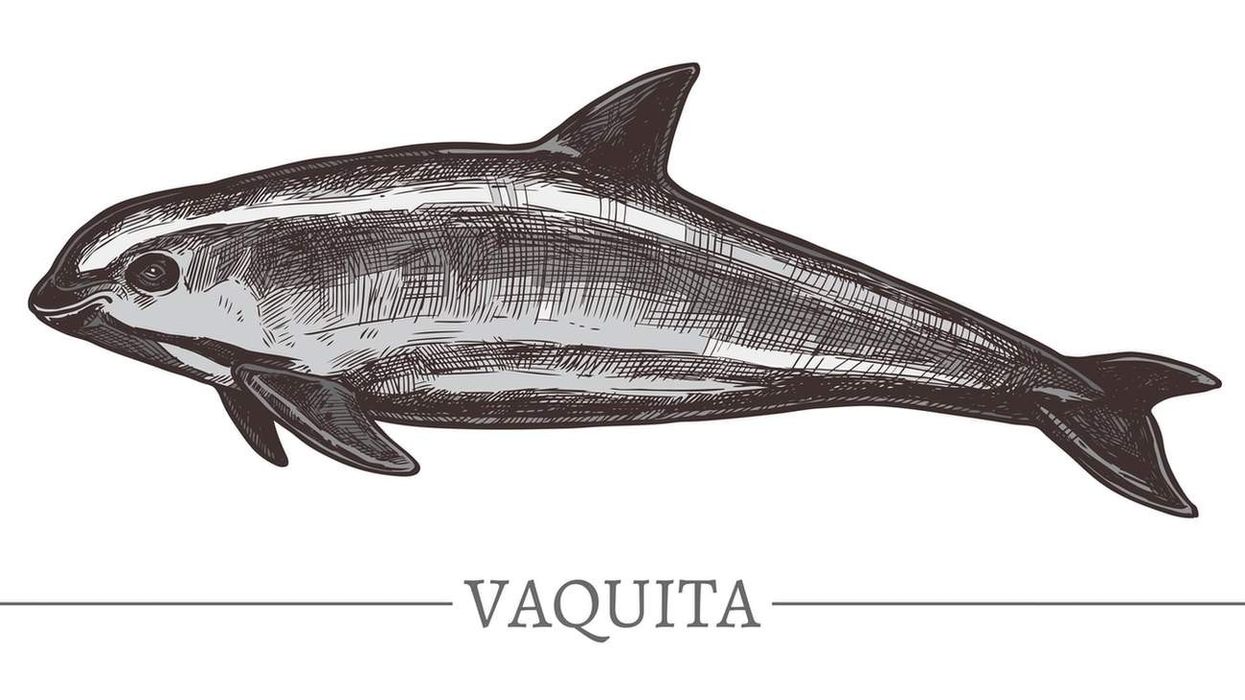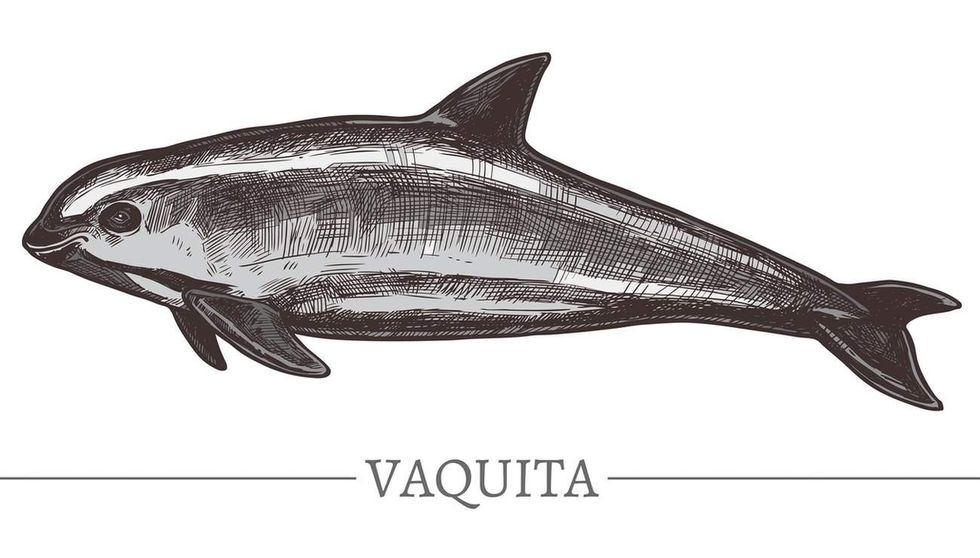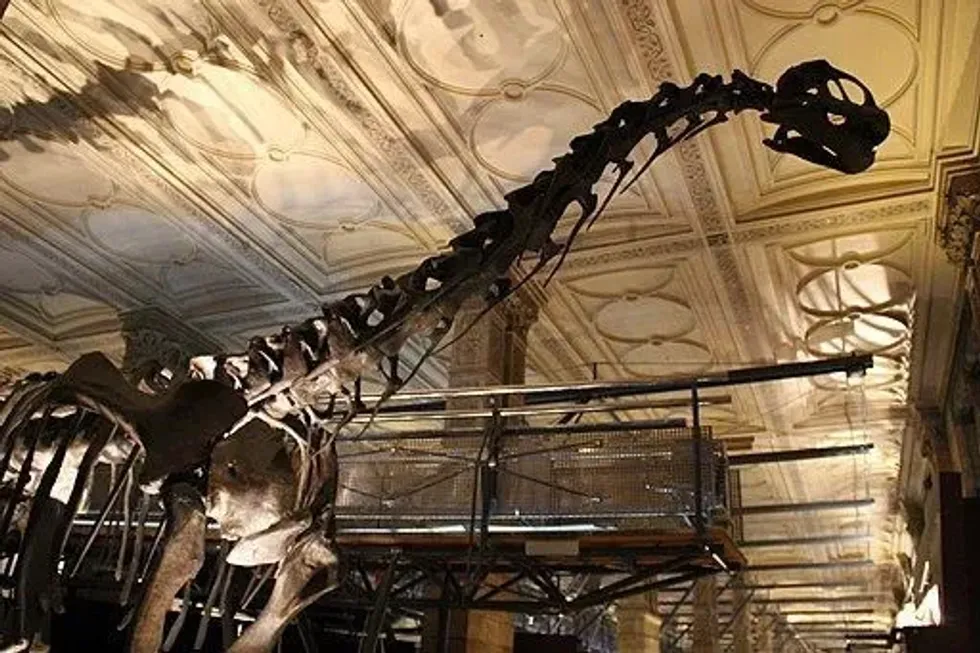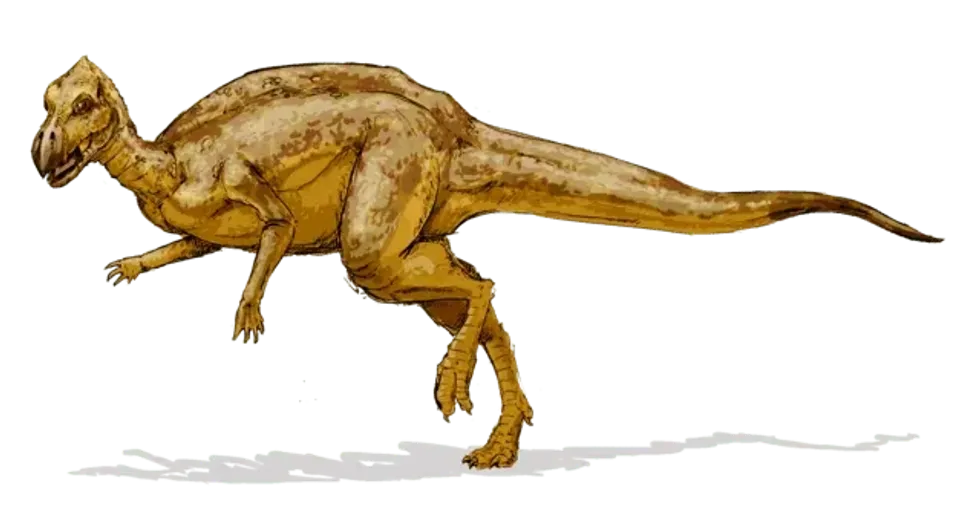La vaquita (as popularly called in Baja Mexico) or the vaquita dolphin is a marine animal that is endemic to the locations of Mexico. Largely found in the upper Gulf of California, Mexico, this animal is now in a critically endangered position as it gets caught in fishing gear.
Fishermen accidentally capture vaquitas when they’re looking for totoabas with their fishing gear and as a result these mammals end up dying.
The loss of vaquita habitat is also a reason behind their dwindling numbers. This species is genetically closer to dolphins and porpoise hence why it is called a vaquita dolphin and vaquita porpoise.
This creature is amongst the rarest mammal in the world, this is why photos of these amazing creatures are hard to come by.
There have been many international committees formed for saving the vaquita population. They use techniques such as acoustic monitoring to keep a count of the vaquita population.
The Mexican government is also looking towards trying to save their national marine mammal through various save the vaquita initiatives. As per the reports from the International Committee for the Recovery of the Vaquita, at present, there are only 10 remaining members in the entire vaquita population.
It is also known as the little cow or the sea shepherd and has a small range. There is also a Save The Vaquita Day.
Vaquita Interesting Facts
What type of animal is a vaquita?
Vaquita is a type of marine mammal and is the most critically endangered species of marine mammals, which has swim bladders of great worth which is largely why this animal is hunted.
What class of animal does a vaquita belong to?
Phocoena sinus or vaquita belongs to the class mammal. This means that they give birth to young ones and do not lay eggs.
How many vaquitas are there in the world?
There are about 10 vaquitas left in the world which is raising the concern of the Mexican government as it is their national marine mammal. It is largely known as la vaquita or vaquita cirva. The government of Mexico announced various conservation efforts to save this nearly extinct species including a ban on gillnet fishing.
Where does a vaquita live?
It lives in some areas of the sea of Cortez in the upper Gulf of California. Further, they can also be found in Baja California, Mexico, and some parts of the united states.
What is a vaquita's habitat?
The mammal is largely found in the salty waters and oceans near Mexico. They can also be found in the sea of cortex in the upper gulf of California since those waters are sheltered and reserved.
Who do vaquitas live with?
Vaquitas generally live alone but they can also be found in groups of two to three. When their population was denser, they were also found in groups of eight to ten at times, but not anymore.
How long does a vaquita live?
A vaquita can live for about 21 years of age. They gain sexual maturity at about six years.
How do they reproduce?
Vaquitas do not reproduce quickly, which is another reason why their conservation status has not yet improved. An adult female is larger than an adult male. The males fight for the attention of the females and mate. The females give birth to one young vaquita.
What is their conservation status?
The vaquitas are listed as endangered that are nearing extinction. As they are a critically endangered species, it is important to focus on the recovery of the vaquita.
This is because of illegal totoaba fishing which focused on harnessing totoaba swim bladder for international trade. There are only about 10 vaquita left.
This is a cause of concern because the totoaba swim bladders are worth thousands of dollars and the zero waste cartel try to hunt totoaba and shrimps but end up killing vaquita as well.
Even after government of Mexico announced conservation efforts including gillnet ban and acoustic monitoring for the recovery of the population of the endangered fish so that their population can increase.
Vaquita Fun Facts
What do vaquitas look like?
It is the smallest porpoise and is therefore also known as the little cow. The vaquitas have small and rounded bodies and have a beak while is significantly protruded which is similar to that of a dolphin, which is also why the species is known as vaquita dolphin.
They have great skin that gets lighter along their underside. Also, the female vaquitas are bigger than the male dolphins. The one distinction about them is that their dorsal fin is comparatively large as compared to their body sizes.

We've been unable to source an image of a Vaquita and have used an image of its habitat. If you are able to provide us with a royalty-free image of a Vaquita, we would be happy to credit you. Please contact us at hello@kidadl.com.
How cute are they?
Vaquitas are very cute. They look like dolphins and are also very small and round which adds to their appearance.
They look like other porpoises but are the smallest porpoise in the marine waters and in the wildlife come across as very visually appealing marine mammals.
Now that they are endangered, scientists are looking for ways to focus on the little cows, so you might not see a lot of them now but if you do, be sure to be pleased.
How do they communicate?
Vaquitas communicate through sonar as they go through the waters in the upper gulf of California or Mexico. This is because they can’t rely much on their eyesight and depend on this communication technique to avoid any obstruction and find their prey.
Scientists have also observed vaquitas to make high-pitched voices that are also used to communicate between vaquita marinaras.
How big is a vaquita?
A vaquita is not a big animal and is very small. It measures about 1.5 m which is about half of that of a normal dolphin. This size also ascertains the fact how the vaquita porpoise gets stuck in gillnets while illegal totoaba fishing is going on.
How fast can a vaquita swim?
Vaquita porpoise is not a very fast marine mammal. However, it can swim faster when there are boats nearby. The boats are usually from the fisheries that are trying to hunt down illegal totoaba in which vaquitas are also hunted in gillnets as collateral damage.
How much does a vaquita weigh?
Vaquita marina weighs about 90 lb. The females of the species are bigger than the males of the species. In addition to this, even when the vaquitas are the smallest marine animals in the world, their weight is little more than expected.
What are their male and female names of the species?
The male and female members of the vaquita dolphin species are just known as male vaquita dolphin and female vaquita dolphin itself. There is no such differentiation from any other species.
What would you call a baby Vaquita?
There is no such name that differentiates the little cow as a young species from any other animal. In general, the vaquitas are known as the little cow but their young ones are not associated with any other name and are just called baby vaquitas themselves.
What do they eat?
Vaquitas are carnivorous animals. They eat a variety of smaller animals including fish, squid, and other crustaceans. However, they are largely known to prey on sharks with sharks being their favorite food to eat.
Being the smallest marine animal in the world, vaquitas are also the smallest cetacean in the ocean. They are preyed upon by larger animals including great white sharks and whale sharks in the Gulf of California. However, they are not hunted intentionally by humans but are hunted as collateral damage.
Are they dangerous?
Vaquitas have never been known to try to harm humans despite their carnivorous nature. It is generally humans that have hunted down vaquitas when they’re looking for totoabas and other such fish.
Vaquitas get hurt and their population is decreased even when the main objective of the fishermen is to hunt other fish. This collateral damage has owed to the very small population numbers that the vaquitas have today.
Would they make a good pet?
The vaquitas have a conservation status of Critically Endangered as they are nearing extinction. As a critically endangered species, there is an international ban on anyone owning them, let alone to make them pets. So, vaquitas cannot be a pet.
Moreover, keeping them away from their habitat in the wildlife can harm their health. Mimicking the wildlife that they’re used to is very difficult. The vaquita marina animals are the rarest marine animals in the world and there is a complete ban on domesticating them.
Did you know...
A great fact about vaquitas is that they have deeply colored areas near their eyes which is also why it is said that they have eyeshadows on their eyes. This is a significant feature of the vaquita which sets it apart from other species.
Why are vaquitas endangered?
Vaquitas are critically endangered sea animals which are nearing extinction with only a few of their population left. Many reasons are owing to their endangered status.
When fishermen try to capture local fishes in the gillnets, like the totoaba. However, vaquitas get captured because of this illegal practice as well.
This is why it is important to put a ban on this practice and prevent them from extinction. In addition to this, other reasons that owe to the decreasing population of the vaquitas can be due to habitat depletion and the other environmental issues that have caused an imbalance in the natural habitat of the vaquitas.
Do vaquitas travel together?
Even when the population of vaquitas is low, they have generally seen only alone and are not seen with whole groups. They can however be seen in pairs or triplets but they don’t form large groups while traveling. This can also be because they are shy and even in the wildlife, you can’t see them with groups of eight.
Here at Kidadl, we have carefully created lots of interesting family-friendly animal facts for everyone to discover! You can even occupy yourself at home by drawing one on our vaquita coloring pages.










